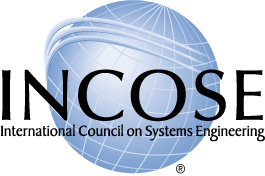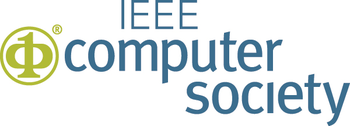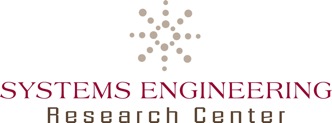Guide to the Systems Engineering Body of Knowledge (SEBoK)
This is the DRAFT version of the SEBoK. Editing is ongoing in preparation for the next version of SEBoK.
To visit the current version of the SEBoK, please go to SEBoK.
Welcome to SEBoK version 1.1.2
On behalf of the more than 70 authors, the editors, and the three SEBoK steward organizations – the International Council on Systems Engineering (INCOSE), the Institute of Electrical and Electronics Engineers Computer Society (IEEE-CS), and the Systems Engineering Research Center (SERC) – welcome to the Guide to the Systems Engineering Body of Knowledge (SEBoK) version 1.1.2. This version was released 1 August 2013, and contains a small number of content changes and wiki additions to version 1.1.1, which was released in June 2013. In addition to the release of v. 1.1.2, the authors are also releasing the first iteration of the SEBoK Sandbox, a collaborative space for members of the community to provide more detailed feedback on and input to the SEBoK. Please visit the Sandbox for more information.
The SEBoK provides a compendium of the key knowledge sources and references of systems engineering, organized and explained to assist a wide variety of users. It is a living document, accepting community input continuously, and regularly refreshed and updated.
About Systems Engineering
Systems engineering is an interdisciplinary approach and means to enable the realization of successful systems. Separate articles in Part 1 provide an overview of systems engineering, place it in historical context, and discuss its economic value.
Systems engineering has roots in systems science. Major sections (called knowledge areas (KAs)) in Part 2 discuss Systems Fundamentals, Systems Thinking, Representing Systems with Models, and the Systems Approach Applied to Engineered Systems.
About the SEBoK
The SEBoK is organized into 7 parts, with a Glossary of Terms and a list of Primary References.
- Part 1 discusses the Scope of the SEBoK, and its structure, including its hierarchy of parts, knowledge areas, and topics. Part 1 also includes a lengthy discussion of SEBoK Users and Uses, including five use cases.
The other parts include:
- Part 2 Systems
- Part 3 Systems Engineering and Management
- Part 4 Applications of Systems Engineering
- Part 5 Enabling Systems Engineering
- Part 6 Related Disciplines
- Part 7 Systems Engineering Implementation Examples
As a compendium, much of the content has restricted intellectual property rights. This copyright information is placed on each page, and must be respected. The SEBoK copyright is held by the Trustees of the Stevens Institute of Technology, and plans for the transfer of the copyright are discussed in the Editors' Note.
As a living document, at the bottom of each page, version identification can be found in a link called "About the SEBoK."
A PDF of SEBoK v. 1.1 and the older SEBoK v. 1.0 may be downloaded at Download SEBoK PDF. Please note that a new PDF is not generated for micro releases, such as v. 1.1.2.
There is a link in the left margin under Quicklinks explaining how to Cite the SEBoK correctly.
About the Sandbox
When BKCASE began, the editors struggled to balance the open access and constant change of a wiki with the archival integrity of a journal. To satisfy both the need for a stable baseline and the desire for broader community involvement, we have implemented a new collaborative space. The SEBoK Sandbox is a copy of the SEBoK that is separate from the baseline version where anyone in the community can edit articles, recommend new content, or provide comments on existing articles. It is important to note that while anyone in the community can gain access to the Sandbox, all submissions must still be approved by the Editorial Board before they will be folded into a new baseline version of the SEBoK. For more information on how this works, please visit the Sandbox.
You may also still contribute to the SEBoK by using the comments feature on the bottom of each page.
Using the SEBoK
Articles in the SEBoK can be found by using the Search field in the upper right corner of each page, as well as through the Quicklinks, Outline, and Navigation menus in the left margin of each page. Detailed instructions about the page layout and features are found in How to Read the SEBoK.
Contact the Editors
Comments can be left on any page by using the DISQUS feature. These are periodically reviewed. Comments can be flagged in DISQUS, which will result in a faster review by the editors.
Email may be sent to bkcase@stevens.edu.

|
|
SEBoK Discussion
Please provide your comments and feedback on the SEBoK below. You will need to log in to DISQUS using an existing account (e.g. Yahoo, Google, Facebook, Twitter, etc.) or create a DISQUS account. Simply type your comment in the text field below and DISQUS will guide you through the login or registration steps. Feedback will be archived and used for future updates to the SEBoK. If you provided a comment that is no longer listed, that comment has been adjudicated. You can view adjudication for comments submitted prior to SEBoK v. 1.0 at SEBoK Review and Adjudication. Later comments are addressed and changes are summarized in the Letter from the Editor and Acknowledgements and Release History.
If you would like to provide edits on this article, recommend new content, or make comments on the SEBoK as a whole, please see the SEBoK Sandbox.
blog comments powered by Disqus
